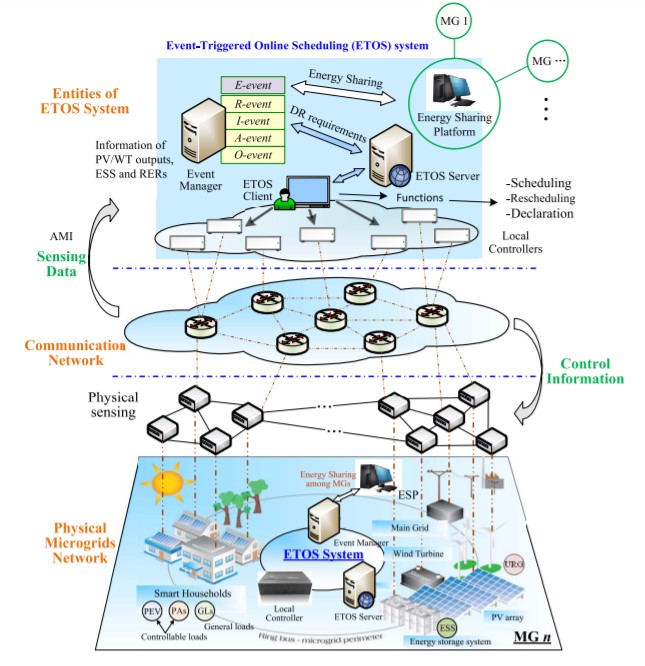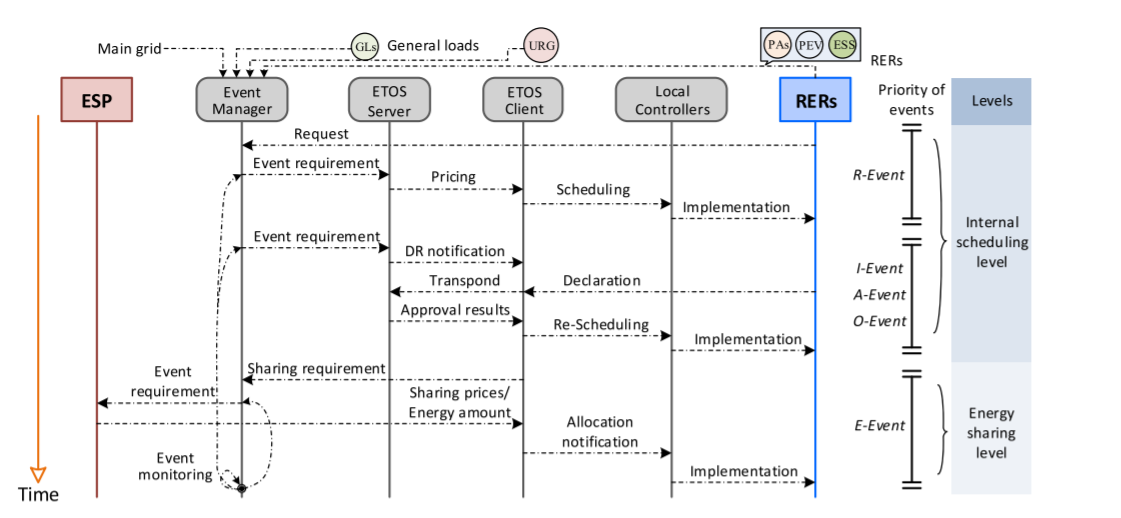Renewable energy sources such as solar, wind, and hydro have transformed the power sector, becoming widely integrated across various industries. However, these energy sources can become unreliable and intermittent compared to more conventional forms of electricity such as coal, nuclear, and gas. Today, the residential sector accounts for nearly 40% of the world’s energy consumption, but supply-demand systems such as microgrids have emerged in recent years as a promising solution to overcome consumption challenges because they’re a self-sufficient energy system that serves a specific geographic footprint.
At an individual level, each microgrid is autonomous and can supply its own load demands with local resources. It consists of wind turbines, photovoltaic (PV) cells, an energy storage system (ESS), and a smart meter to address local residential load demands such as plug-in electric vehicles (PEVs), dishwashers, washing machines, and other appliances that require power from local resources, other microgrids or the main grid.
Integrating adjacent microgrids to form a multi-microgrid (MMG) system could support residential energy sources to become more reliable and cost-effective and mitigate electricity demand coming from the main grid. In fact, to enhance the features of residential MMG systems, a team in China developed a flexible event-triggering online scheduling (ETOS) framework that integrates internal scheduling with energy sharing capabilities to make it easier to manage energy consumption.
“[Our goal was to] present a framework that was efficient enough [to support] flexible operations [for] residential multi-microgrid systems and overcome specific limitations,” said Xiaodong Yang, a Postdoctoral Research Fellow with the Huazhong University of Science and Technology in Wuhan, China. “[This is] a natural approach to meet the real-life dynamics of a small scale residential MMG system with the feature of high practicability.”

Figure 1: The proposed architecture of the ETOS framework for MMG Systems
Figure 1 outlines the architecture of the team’s ETOS MMG system. It follows a hierarchical approach consisting of internal scheduling levels among the individual microgrids with energy sharing capabilities throughout the whole system.
The ETOS framework includes four main levels: self-scheduling, small-scale events, high practicability, and real-life situations. Together these pieces create a tool to effectively manage residential energy resources, deal with uncertainties and complexities, and take action to strategically enhance – and schedule – energy usage.
The internal scheduling system follows a decentralized approach for each individual microgrid, so residents can manage the consumption behavior between various household appliances, the ESS and PEVs. A price-based incentive model is then created to streamline the decision-making process. This model also serves as the foundation of the event-triggered operation.
Once the internal schedule is set for each microgrid, the energy sharing capabilities between a microgrid buyer and seller go into effect through an energy sharing platform (ESP). The ESP is responsible for making sure there is a balance in power and payment within the MMG system. Figure 2 illustrates the information exchange between the multiple parties involved.

Figure 2: Sequence diagram for information exchange among ETOS entities and residential energy resources
To prove the ETOS framework’s effectiveness, the team applied their concept on a small-scale residential MMG system during the summer and compared it to two other microgrid methods commonly found today. Each microgrid consisted of PV cells, wind turbines, an ESS, a vehicle-to-grid option, as well as appliances such as washing machines, electric water heaters, among other household necessities.
The first microgrid method operated without any optimization scheduling capabilities in place, while the second took a more predictive control-based model approach where each microgrid operator only focused on its own objectives without any cooperation from the other grids. As a result, the ETOS framework performed better than the other two methods because it demonstrated an 87.69% and 45.83% (compared to methods 1 and 2) decrease in energy consumption and was more cost-effective due to its real-time processing and energy sharing capabilities.
As a next step, the team is working on refining their framework to focus on safety, the speed of distributed energy trading, and the internal price clearing measurement to encourage customer participation before it can be fully operational in the market.
For more information on energy consumption and microgrids, visit the IEEE Xplore digital library.
Interested in learning about the best practices for electric supply and communication utility systems safety? The 2023 National Electrical Safety Code (NESC) is now available for pre-order.





